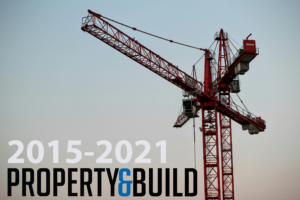To improve quality and sustainability, the industry now has no choice but to overhaul its design and procurement strategies, says Sven Ollmann from Warren and Mahoney Architects

As an architect working on large-scale projects internationally, I’ve seen a number of adverse practices introduced over the past decades.
Two in particular stand out as disproportionately negative influences on design and construction quality: the practice of shrinking design programmes, budgets and scope, and the rise in popularity of inappropriate procurement methodologies.
It’s no secret that decisions made early in the design process are easily implemented, and the later you leave them, the harder it becomes.
True cost savings—without the negative side effects on quality—are in fact made by proper collaboration between the design team and contractor at the outset of a project to embed value engineering, innovation and sustainability into the very bones of a new construction.
Despite this obvious logic, we’re seeing design budgets and scope squeezed, alongside the rise in popularity of design and construct (D&C) procurement, with an associated decline in quality.
Design squeeze: a false economy
When you minimise consultant fees, you naturally constrain the scope of their services. This reduction in design scope leads to less research, less innovation and off-the-shelf vanilla solutions.
They might be quick to document, but they are not necessarily the best solution for the site or brief, with all outcomes potentially affected—architectural, structural, services, sustainability and construction.
Clients risk a potentially massive compromise in a holistic design outcome by not getting the right input at the right time—all for a saving in consultant fees that is negligible in the overall picture of the development cost.
This is a false economy when you consider the lifetime costs of building maintenance, servicing and energy use, all of which can have an exponentially negative effect on the asset. And the rapidly growing need to build in sustainability practices cannot be achieved within a reduced design programme.
D&C contracts inappropriate for complex projects
Procurement strategy has a substantial impact on project outcomes, with D&C contracts being particularly contentious, since tenderers typically compete on price. Usually the lowest price wins the contract. But as we all know, you get what you pay for.
Certainly, this style of contract has its place in simple industrial structures. But at some point the industry started applying the model to more complex projects, which is where it has fallen apart conceptually and in practice.
The process hands a more or less developed design over to tenderers who are then invited to essentially “value engineer” the design and submit their best price.
I sympathise with D&C contractors, who typically have no choice when pricing a job.
In a fierce marketplace, all contractors will put a lot of money and effort into landing projects, and with the contract price as the overarching evaluation criterion, they are forced to be highly competitive to win work.
So in the four to six weeks they have to gather trade prices, of course they look at ways to value engineer, perhaps by lightening the structure, simplifying the mechanical and engineering design, finding cheaper alternatives for finishes and so on.
The only way to get to the lowest price is to cheapen everything. But this has nothing to do with value.
The broken piece of logic of the D&C approach is that the surest way to actually get the best results – including robust value engineering – is through the effort of a good design team combined with early contractor involvement.
A better strategy: early contractor involvement
Projects that achieve great outcomes across all aspects of a development are those that begin with broad collaboration across all consultants and stakeholders—including the contractor.
The benefits the design team and contractor can deliver are manifold, with superior buildings that perform on highly desirable criteria, such as:
- Lower lifetime energy costs – always an advantage to building owners and tenants.
- Lower building maintenance costs.
- Lifetime adaptability.
- Easier to market and let tenancies.
- Good environmental credentials.
- Longevity.
With the architect coordinating the engineers’ and other specialists’ input, and the contractor consulting on the practicalities of construction, you have a formula for success.
The design team do not get disconnected from the building delivery and the contractor participates actively in the design process. All stakeholders are involved throughout the process, and key information does not get lost in translation.
It should be obvious that all of this requires the willingness to collaborate, but the unfortunate processes of D&C procurement and squeezed design programmes have undermined the spirit of communication and teamwork. Both contractors and designers need to relearn to work together.
The impact of sustainability regulations
District authorities are starting to tighten up regulations to get better outcomes for environmental sustainability. The city of Sydney is leading the way, and without a doubt we will see these initiatives roll into state and federal regulations.
There will be no choice for developers and building owners but to have specialist involvement from the outset of a project and follow through to completion, covering the entire lifecycle of a development.
We don’t have to wait for the National Construction Code to be rewritten; we have the tools and the knowledge to design and deliver quality, sustainable architecture. We just need to refocus the process.



